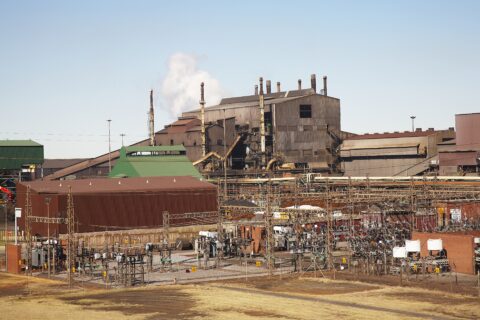SA Mining
Flow-Through Shares
By: Nelendhre Moodley
The Minerals Council South Africa is in the process of finalising the hugely successful Canadian flow-through shares model specifically for the junior mining sector, head of the council’s Junior and Emerging Miners’ Desk Grant Mitchell tells SA Mining.
“This is a landmark year for the Emerging Miners’ Desk as we have finalised the draft document of the Canadian mining exploration tax incentive system, and aligned it with South African tax laws. In so doing we have developed a flow-through shares model suitable for the local junior mining sector,” says Mitchell.
“Basically, flow-through shares have been used successfully in Canada over the years in raising equity for junior mining companies. The basic idea being that exploration expenditure of the operating company is foregone in favour of the investor. The investor then gets the benefit of the tax deduction as and when the operating company has incurred the expenditure.
“No such system exists in South Africa. What we have is the J12 regime which allows an investor in shares to claim a full deduction of the amount invested in one year. This regime has become increasingly popular with the market having raised R3.6-billion in 2018. However there has been hardly any uptake in the mining space, one reason being the inability to trade the shares, which makes it a liquid investment, and restrictions on the amount of shareholding that any individual shareholder may have. For exploration there is a cap of R500-million. In any event the J12 regime is ending in 2021 unless extended. For this reason the Minerals Council, in conjunction with the law firm Fasken, felt that the flow-through model was far more suitable for stimulating exploration in South Africa,” says Mitchell.
While the date for the document to be ratified into law is unknown, the Minerals Council is in the process of engaging its members and key stakeholders in a bid to garner industry buy-in.
“Once the document has been signed off by the CEO of the Minerals Council, Roger Baxter, it will be sent to Minister of Mineral Resources and Energy Gwede Mantashe and the National Treasury for consideration.”
Driving the junior miner’s agenda
Mitchell says following the establishment of the Emerging Miners’ Desk in 2014, the Minerals Council has worked tirelessly to lift the profile of emerging and junior miners and to grow the sector by engaging with the Department of Mineral Resources and Energy (DMRE) and the minister.
“In fact, the Minerals Council itself has recognised the sector as an important constituency and we have been driving ongoing ministerial interactions with government.”
The sector however continues to face headwinds, particularly in accessing finance and meeting tough regulatory requirements.
As such, the Minerals Council has been driving the agenda to tackle two key policy-related challenges that are hampering the growth of the junior mining sector. These are the Minerals and Petroleum Resource Development Act and the Mining Charter, which has offered a narrow definition of junior miners, as related to turnover, and unyielding requirements, as related to the Social Labour Plan (SLP).
“In its definition of a junior miner, we feel that the charter should offer a much higher threshold for juniors in terms of turnover. It currently defines juniors as having an annual turnover of under R150m. As the Minerals Council we feel that the definition should be extended to include a threshold of around R500m per annum in turnover.”
Secondly, Mitchell flags the plight of the really small-scale miner, such as members of the Clay Brick Association, and their inability to meet the SLP requirements.
“Many members of the Clay Brick Association have a small quarry attached to their brick-manufacturing business. The whole operation is then defined as a mining operation. Even as an extremely small quarry operation, some with fewer than 10 people, the entities are required to submit an SLP. However, owing to tight margins, some members find it difficult to meet with the regulations as they can ill afford it. Although the clay brick manufacturers are happy to abide by the SLP, they do require it to be manageable for their size and scale. So while legislation is applied across the board, in such instances we need to further examine the legislation and fine-tune it to meet all miners’ needs,” explains Mitchell.
Growing the junior mining sector
The junior mining sector remains an important one for the country as it delivers significant turnover – R54bn in 2018.
Given its significance, the Minerals Council remains committed to growing its membership of junior miners, which currently accounts for around 40% of its total Minerals Council membership. The Minerals Council has a total membership of 80 companies, with junior miners making up 30 companies.
“In the past two to three years, the Minerals Council has grown the number of junior mining member companies by about a third. Three years ago we were sitting on just under 20 affiliated junior mining companies, now we’re over 30 companies. Looking ahead, I believe that we will continue to grow the sector. Already there is much interest from locally operating Australian junior miners who are bringing much-needed investment into South Africa and who are joining the Minerals Council Junior and Emerging Miners’ Desk. Furthermore, there are a large number of queries from potential companies,” says Mitchell. He adds that the sector is home to “some really solid projects” including Orion Minerals’ Prieska project in the Northern Cape and Bauba Resources’ chrome and platinum projects.






 Sign-up and receive the Business Media MAGS newsletter OR SA Mining newsletter straight to your inbox.
Sign-up and receive the Business Media MAGS newsletter OR SA Mining newsletter straight to your inbox.